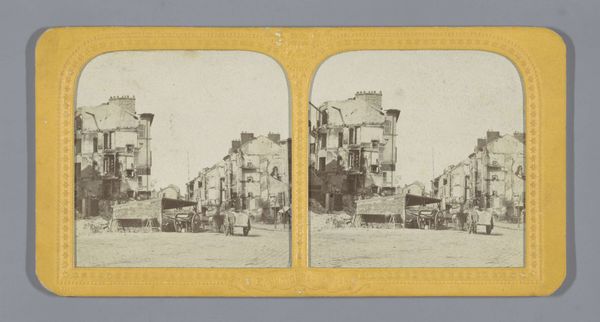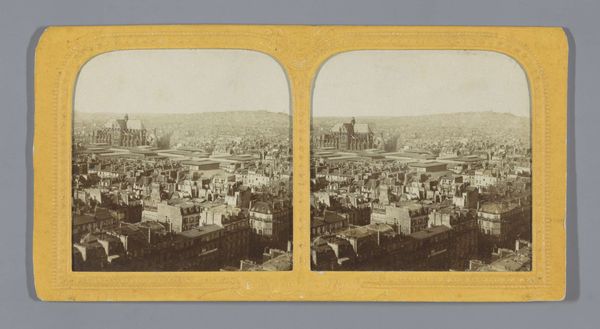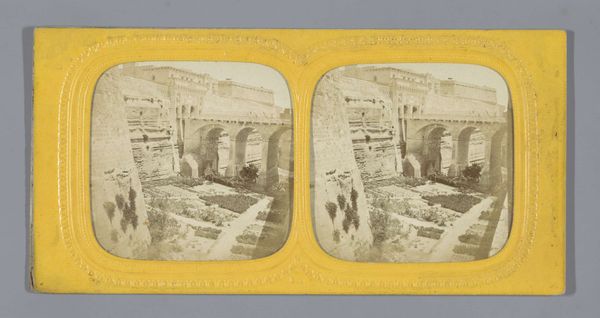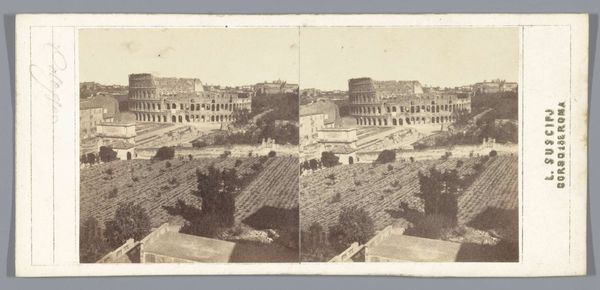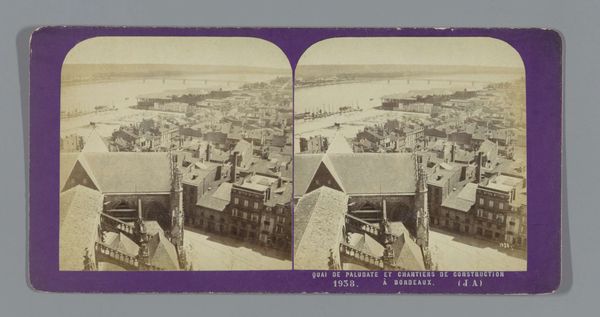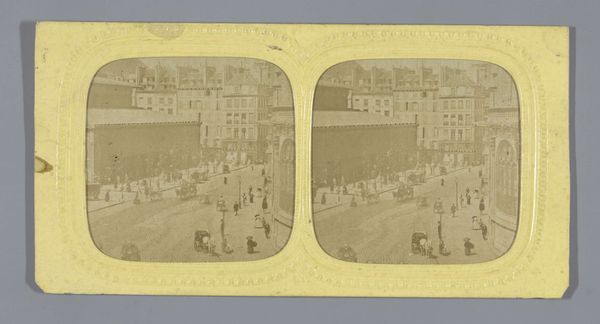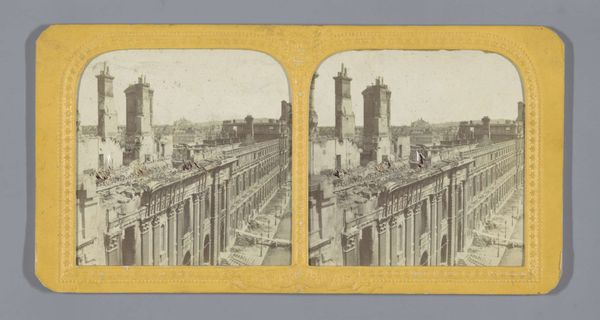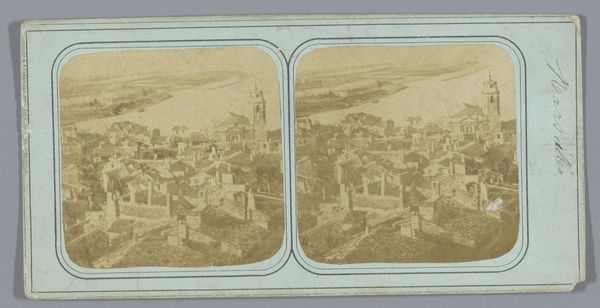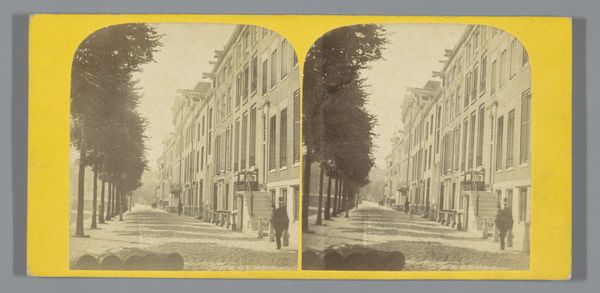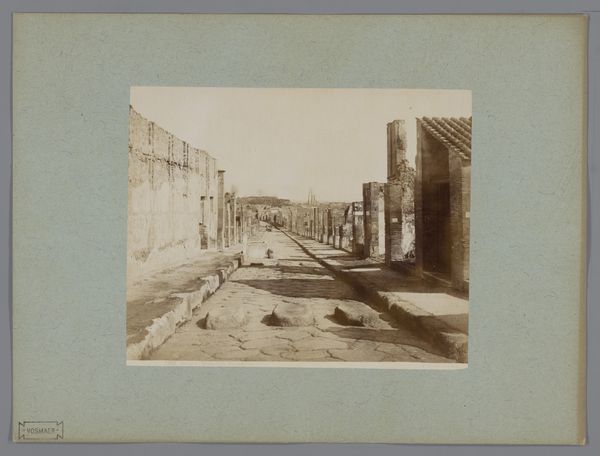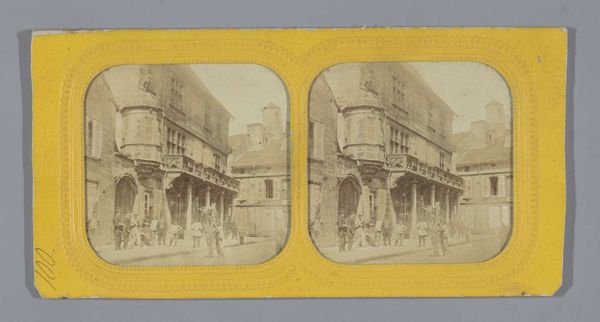
Dimensions: height 86 mm, width 174 mm
Copyright: Rijks Museum: Open Domain
Curator: This gelatin silver print presents a view in the Triq Sant' Anna, il-Furjana, Malta. We believe it was captured sometime between 1855 and 1875, but the photographer remains anonymous. Editor: There's something so serenely timeless about it. It's that washed-out effect that transforms solid architecture into something ghostly, like a memory fading in the heat. Curator: Precisely. That quality comes, in part, from the Pictorialist aesthetic at play, which sought to elevate photography to art through painterly effects. The street scene becomes more than just a record of place; it becomes an evocation of a mood. Editor: It’s remarkably depopulated. Is it a trick of the exposure or evidence of the photographer intentionally composing a quiet street? You feel like you’re witnessing something unfolding in a city left almost entirely to the architecture. Curator: Possibly both. Long exposure times in early photography often meant that moving subjects were blurred or simply disappeared. But yes, it definitely brings out a specific focus on how urban planning dictates space. Notice the perspective created by buildings. The light etches their features. Editor: Absolutely. It speaks of the controlled environment, reflecting maybe an imperialist attitude of documenting space in service of...knowledge? Order? Control? You are not drawn to the bustle of street life but rather observe space under colonial rule. Curator: Interesting point, that’s something to explore further I feel. You've got me thinking. Editor: It just lingers, doesn't it? Like the sun hanging heavy in that Maltese sky, bearing witness to changes both grand and insignificant. Curator: Indeed. What might have been, what might still be. It invites the viewer to reflect on their relation with the city itself and how it dictates so much without us being able to dictate it.
Comments
No comments
Be the first to comment and join the conversation on the ultimate creative platform.
